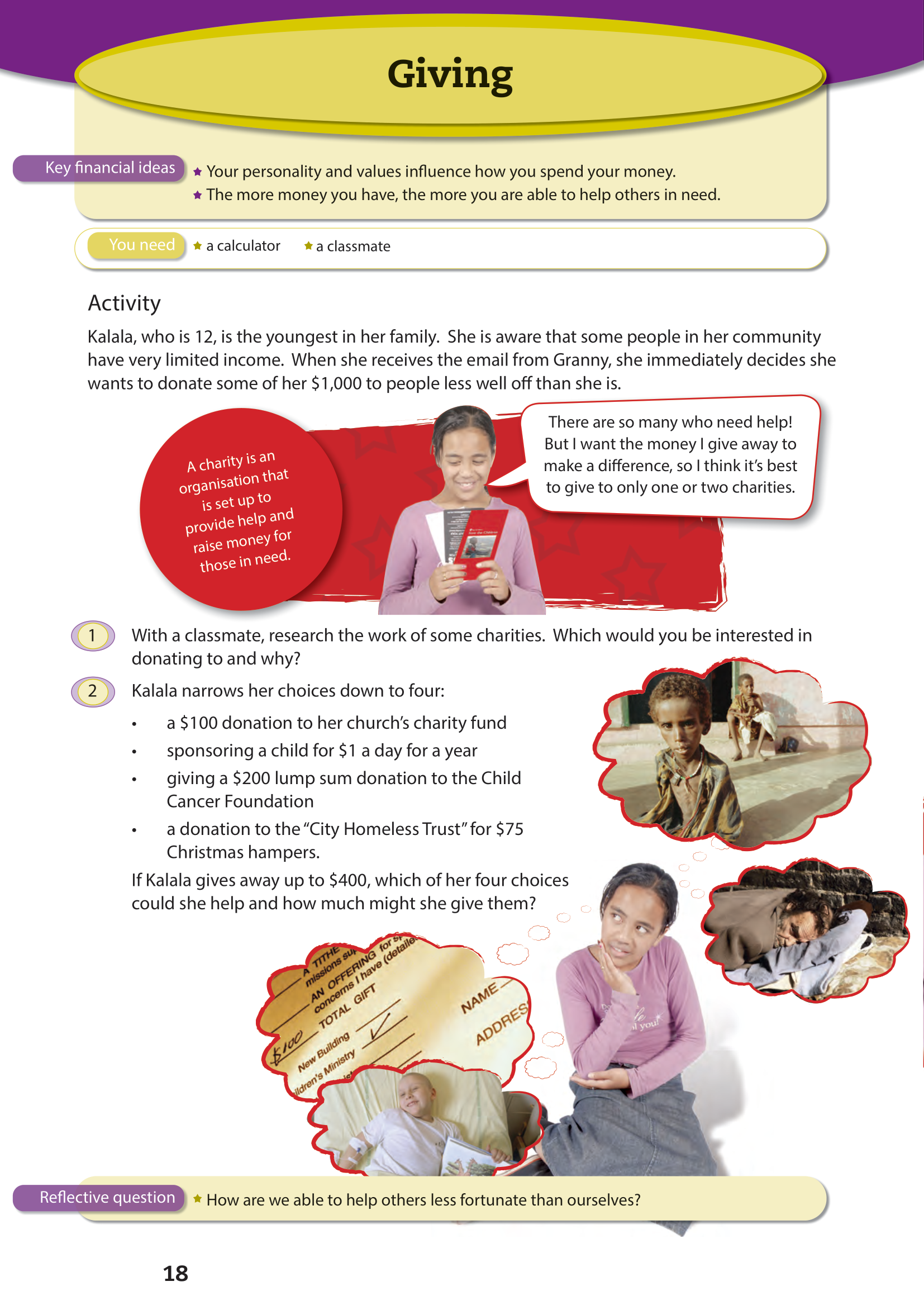This is a level 3 number activity from the Figure It Out series. It relates to Stage 6 of the Number Framework.
Click on the image to enlarge it. Click again to close. Download PDF (551 KB)
use addition to solve money problems
A calculator
FIO, Level 3-4, Financial Literacy: Granny’s Gift, Giving, page 18
A classmate
Financial understanding
In this activity, Kalala is aware that her financial decision to support a charity will bring benefits to others. The decision on which charity to support will be influenced by her personality, values, and personal preferences.
For question 1, a larger group discussion on different charities will generate a greater range of answers. Encourage the students to look at the pros and cons of donating to each charity they look at. Ask: How would you decide which charity to support?
Can you only give money to charity? What about time, effort, labour, special talents? How do some “celebrities” support charities? Have the students interview someone who gives to charity. They could find out why they do this and what they “get” from giving money.
For question 2, students will need to know that there are 365 days in a (non-leap) year.
Encourage the students to combine $100, $365, $200, and $75 (or $150, $225, $300, or $375 for two or more hampers) in as many different combinations as possible to reach $400. Encourage them to be systematic.
Extension
Mathematics and statistics
Ask: If Kalala received $3,000, how much do you think she would wish to donate to charity? This leads to a context for ratios, that is, $400:$1,000 is equivalent to ?:$3,000 (? = $1,200). (See the table of NDP material on page 4.) What percentage of her money would Kalala give to charity if she donates $400? (40 percent)
How much of $1,000 would you be prepared to donate to charity? What percentage is that?
A double number line is useful for such questions:![]()
Answers to Activity
1. Answers will vary.
2. Answers will vary. Examples of ways that Kalala could spend up to $400 include:
- sponsor a child for a year ($365)
- donate $100 to church, make a $200 lump sum donation, pay for 1 Christmas hamper
- pay for 5 Christmas hampers.
Reflective question
Answers will vary. Helping others doesn’t always have to involve money. It can involve time, energy, listening, encouraging, giving, helping, doing …
